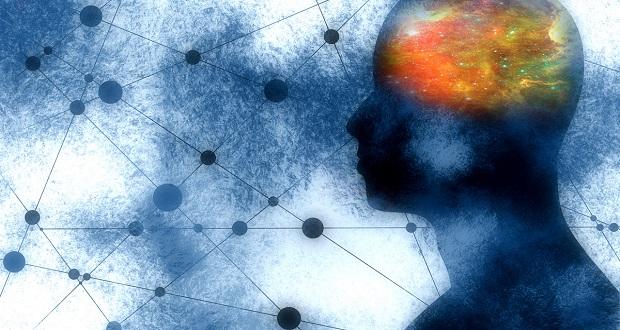It is no secret the that the “millennial” generation (also known widely as “Generation Y”, “Generation Next”, or “Gen Y”) is the most racially and ethnically diverse population in the United States, and the emerging Generation Z is not far behind. According to Pew Research, just over forty percent of millennials are people of color, and a large number are immigrants. In less than four decades, it is predicted that the U.S. will not have a clear racial or ethnic minority at all. Consequently, both Gen Y and Gen Z have grown up with rapidly shifting population demographics and an ensuing multicultural, multiethnic, and multiracial society. Increasing globalization and access to technology have also contributed to millennials’ worldview of diversity.
Through the exposure to a new cultural landscape, millennials view the world from a different lens than previous generations. Many have gone to school and worked with individuals from all races, genders, religions, and cultural backgrounds their entire lives. With the rise of multiculturalism in the late 1980s and 1990s, millennials were encouraged to respect and value different perspectives and backgrounds. Social research has suggested that they are more open and tolerant of differences and find value in diversity, particularly at work.
Millennials views on diversity and inclusion have been shaped by their life experiences, and they have generally been viewed as a generation that has come to expect — and, in some cases, demand – diversity, equity, and inclusion.
But there has been a disturbing trend when talking about millennials and diversity. Some have assumed that because some millennials are seemingly comfortable with cultural differences that the conversation around diversity and inclusion is no longer needed. There has also been a tendency to ascribe millennials with the role of dismantling racism, sexism, and other biases, failing to take into account the systemic nature of these “isms”. While Pew Research did find that millennials were more open than previous generations, most of this “openness” was around issues such as interracial dating and marriages, which are certainly important, but do little to address wider, more deep-seated social justice issues such as discrimination, race-based violence, inadequate access to resources, and LGBTQ intolerance.
Simply put, there are myths and exaggerations surrounding millennials and diversity and inclusion.
Millennials understand diversity more than other generations.
Millennials don’t see color.
For millennials, things like gender equality and racism are a problem of the past.
Diversity is all about cognitive differences – millennials should focus on diversity of thought.
As a diversity practitioner (and a millennial), I have heard all of these myths come up in some form or another, and they all have the same unfortunate effect: limiting authentic, honest, and bold engagement and dialogue about differences. Simultaneously, these myths have also had the effect of isolating individuals who do find value in their own cultural identities, perhaps causing them to be more reluctant to share their own unique experiences and perspectives with others.
In their 2015 report, The Radical Transformation of Diversity and Inclusion, Deloitte found that millennials were less likely to identify themselves based solely on demographic characteristics such as race and gender. Instead, Deloitte concluded, these demographic identifiers were an artifact of the past, and better suited to less strategic discussions on diversity and inclusion. This conclusion is a factor that likely led to the consulting firm’s recent decision to dismantle the organization’s existing employee resource groups (ERGs), traditionally based on demographic affiliation, in favor of inclusion councils. According to Deloitte, millennials view demographics as “pigeonholes” and focus less on gender, racial, and ethnic diversity than previous generations.
To this, I ask: Which millennials?
As a woman of color, I have never had the privilege of not acknowledging my race or gender – every time I walk into a room, it is acknowledged for me. It has never crossed my mind not to “label” or “identify” myself with facets of my identity that have shaped my experiences, values, beliefs, and feelings. I recognize that the perspectives that I bring are not in spite of my experience as a woman of color, but largely because of my background. Simply put, my “diversity of thought” is a manifestation of where I grew up, the values my parents instilled in me, and the institutions and groups to which I belong. You cannot have diversity of thought without diversity.
How can we move past “demographics”, when the dialogue for many has barely even started? Why should an employee feel they have to give up a portion of their own identity so that others are more comfortable?
There are serious consequences in generalizing the perceived perspectives of a group to the real and unique experiences of individuals, particularly when Deloitte offers no insight into how individuals for their study were selected or the demographics of their sample. While there may be millennials who choose not to identify themselves by their race, gender, color, gender identity, gender expression, or other demographic, many find empowerment and pride in sharing their experiences with others in hopes of creating a more open avenue for understanding. There are also real benefits for individuals who come together as a group with those they feel can best understand their culture and experience, creating a sense of belonging, understanding, and inclusion.
To ignore these very real and salient differences because of the assumption that millennials can “look past” or even don’t need to acknowledge different dimensions of diversity is irresponsible. Organizations that truly value diversity and inclusion and have a commitment to supporting the development of an environment where all feel valued, respected, and included have a responsibility to recognize what “diversity myths” might play a role in their own policies, practices, and decision-making. We cannot have inclusion without acknowledging the impact that different perspectives, experiences, and cultures bring. These myths, then, must be brought to the forefront, analyzed, and discarded when necessary to make room for more inclusive and effective change.



















